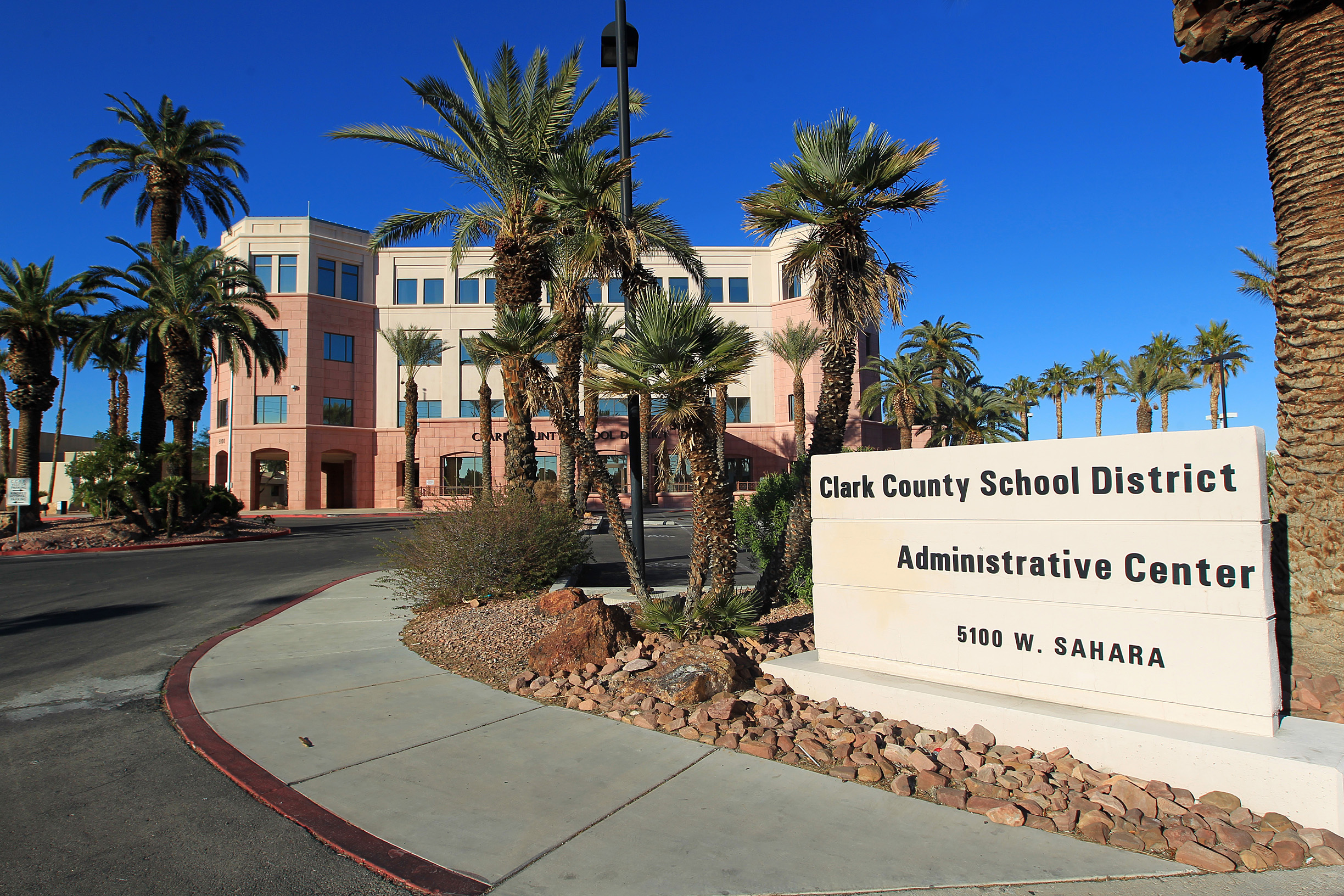Clark County trustees approve distance education to start the school year

It’s official: Students attending the Clark County School District will begin the upcoming academic year working from home.
The Clark County School Board of Trustees voted unanimously Tuesday evening to approve a full-time distance education plan for the start of the 2020-2021 school year. The decision, many months and contentious meetings in the making, comes amid a rise in COVID-19 cases locally and across the state.
It’s unclear how long distance learning will remain the operational model, but trustees will be reviewing the situation, including the health dynamics playing into it, every 30 days. The board’s motion also included a carveout for the district’s rural schools, possibly allowing them to proceed with some in-person instruction if those communities meet unspecified health criteria.
Additionally, the board approved a “hybrid teleworking” model for staff members, meaning they could work from home or at school when possible.
Trustee Linda Young cut to the chase during trustees’ discussion, saying she only supported remote learning and was frustrated with the continuous talking in circles. The veteran school board member called on the superintendent and central office staff to let principals and teachers work out the details within their own schools.
“We just have to get to the next step. I don’t think we should be bullied into (a) back to school face-to-face plan because we lose federal dollars,” she said, referring to threats from the Trump Administration, which has been pressuring districts to fully reopen schools. “It’s better to lose federal dollars than any of you to lose your life.”
District staff had recommended an online-only start to the school year ahead of the trustees’ special board meeting. The district, however, had submitted plans earlier this month to the Nevada Department of Education for three possible reopening plans — in-person instruction, distance education or a hybrid model in which students would attend school in person two days a week and work from home the other three days.
Some of the same concerns posed about the hybrid model, such as child care, exist with the distance education plan and have not yet been ironed out.
Deputy Superintendent Brenda Larsen-Mitchell pointed out the distinction between the online education offered on the fly in the spring versus what needs to happen moving forward. Educators have acknowledged locally and nationally that very little actual learning occurred during the last quarter of the 2019-2020 school year, leading to what some have coined the “COVID-19 slide” — gaps in students’ education as a result of the abrupt school closures.
"We know that we have to provide an effective distance education program for our students,” Larsen-Mitchell said. “It cannot be a repeat for what we had the last nine weeks of school."
But technology access remains an issue heading into the new school year. Greg Halopoff, the district’s chief technology officer, said the district expects to receive a map “at some point” from Cox Communications showing where internet connectivity is not available for students. The district estimates about 40 percent of households might need internet access either through low-cost programs or WiFi hotspots purchased and deployed by the district.
Supply-chain issues are making it difficult to achieve a 1-to-1 ratio of Chromebooks for students ahead of the new school year, too. District officials said devices will be distributed with a priority given to students who do not have access to any devices at home.
Larsen-Mitchell walked through some of the features of the online-only plan such as virtual instruction both in real time and recorded, virtual office hours, regular wellness checks on students and one-on-one support for students with disabilities.
Still, many details have to be worked out at the school level. Teachers will start Aug. 5 with a string of professional development days built into the schedule before students resume classes Aug. 24.
The board also approved semester-based courses for middle schools and traditional yearlong courses for high school students. It was the last decision point of the evening and appeared to vex board members based on uncertainties surrounding what principals and teachers actually preferred.
District staff had said the four semester-based courses would make for an easier transition to an in-person schedule with social distancing and would make for smaller student caseloads for teachers during distance education. Multiple concerns had been raised about the difficulties with a semester-based schedule for high school students enrolled in Advanced Placement courses or International Baccalaureate programs, hence trustees’ ultimate decision to place the middle and high school students on two separate instructional schedules.
Even though the decision to start with distance education passed unanimously, some board members expressed concern about its long-term implications. Trustee Chris Garvey said it could be the “death” of public education.
“Those that have resources are going to find a way to get their kids either in private, charter, homeschool — whatever,” she said. “And those that don’t are going to slip down a slippery slope that is very hard to come back from, and I haven’t even addressed food questions or anything else.”
The fate of support professionals remains a question with distance education, too. Chief Human Resources Officer Nadine Jones said the district would look at repurposing support professionals to meet the needs of online learning, but she acknowledged layoffs could be a possibility depending how long distance education is operating.
The school reopening debate, which has proved to be one of the most agonizing and complex decisions amid the pandemic, has inflamed existing tensions between some Clark County trustees and Superintendent Jesus Jara. Last week, Trustees Linda Cavazos, Danielle Ford and Linda Young requested a special board meeting to discuss Jara’s future with the district. The meeting has not been scheduled yet.
